Journey to full-scale, community-supported teaching kitchens in FoodPrints partner schools
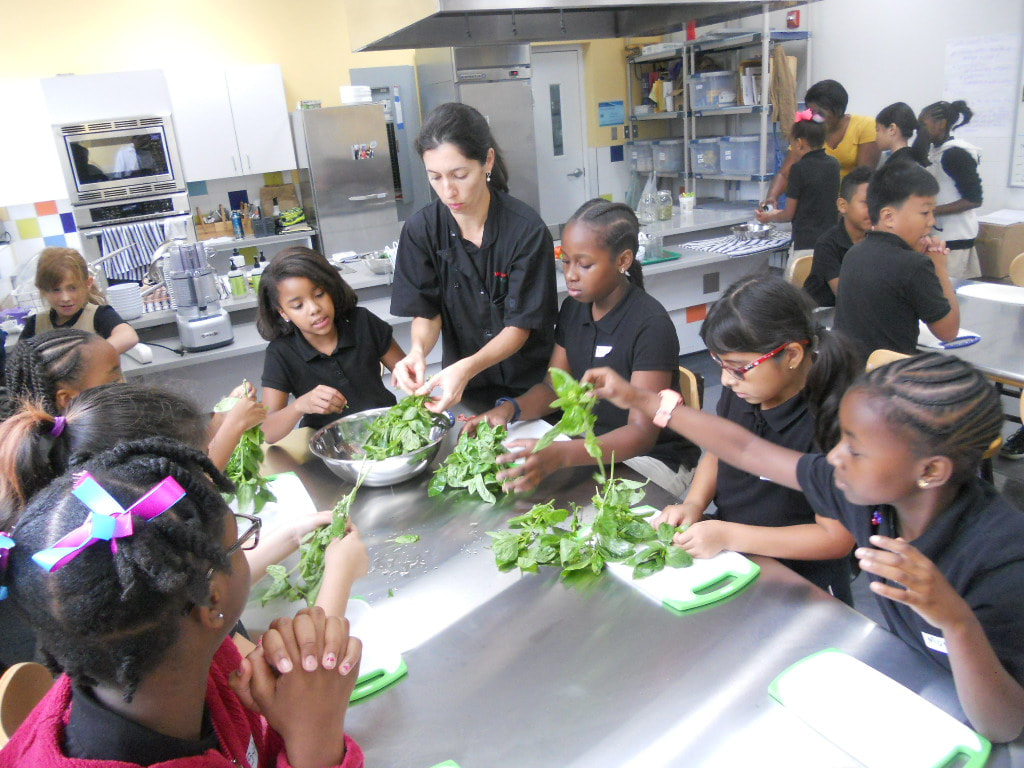
When FoodPrints started at Watkins elementary in 2009, we had a beautiful vegetable garden to plant in and harvest from. But we were teaching out of an old science lab that had a few cabinets and a tiny sink. It took a VERY long time to wash produce from the garden and to wash dishes, which limited our cooking and eating in FoodPrints classes.
There was so much enthusiasm from the students and families to cook more that we began to plan for a better facility. We put together a team of volunteer parents and representatives from the school administration to work on a plan to create a teaching kitchen in the school.
Our plan was to convert an empty classroom with four distinct areas:
- A kitchen (with a double oven, range, hand washing sinks, dishwasher, demonstration mirror and child height counters around the island)
- A meeting area for lessons (with a carpet and library of garden and cooking-related books)
- An indoor gardening area (with grow lights)
- Work areas (work tables for students to chop and mix ingredients and work on academic projects)
(These four main areas continue to be the key elements of all new FoodPrints teaching kitchens as they are designed and built.)
We secured a local contractor (Keil Construction), who agreed to work on the project at a reduced rate, and worked with the Department of General Services to secure the permits. Then we launched a Kickstarter campaign to raise the $60,000 needed to fund construction.
But our plan didn’t become reality until Jose Andres and Think Food Group came to the rescue at the last minute. Chef Jose made a generous donation himself and made a call on Twitter for his followers to support the campaign.
A beautiful new kitchen was completed in the fall of 2011, and students benefited by being able to cook and eat more nutritious foods, have room to start seedlings indoors in the winter and observe them grow, and have more room for teamwork, small-group activities, and academic learning.
By 2015, the teaching kitchen had become such an important part of the school that it was included in the “educational specs” (in other words, the requirements) for what was to be included in the architectural drawings for the Watkins modernization. During the 2016-17 school year Watkins was renovated and students moved out of the building while the work was done. The architects and parent/administration/community School Improvement Team designed a fantastic new teaching kitchen closer to the garden, with windows overlooking a new patio and outdoor work area where we grow herbs for cooking.
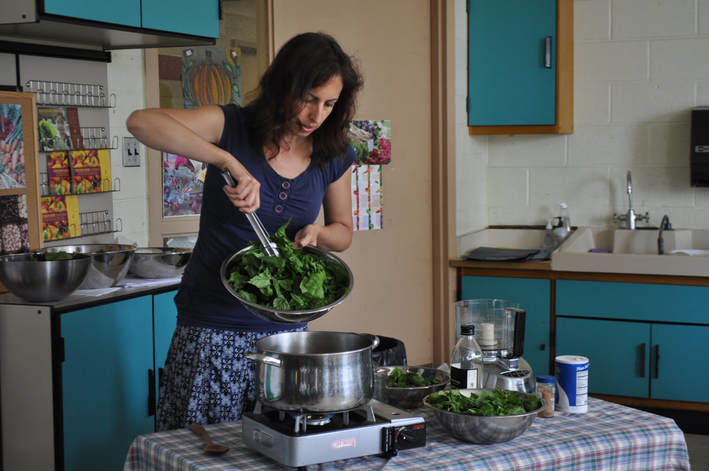
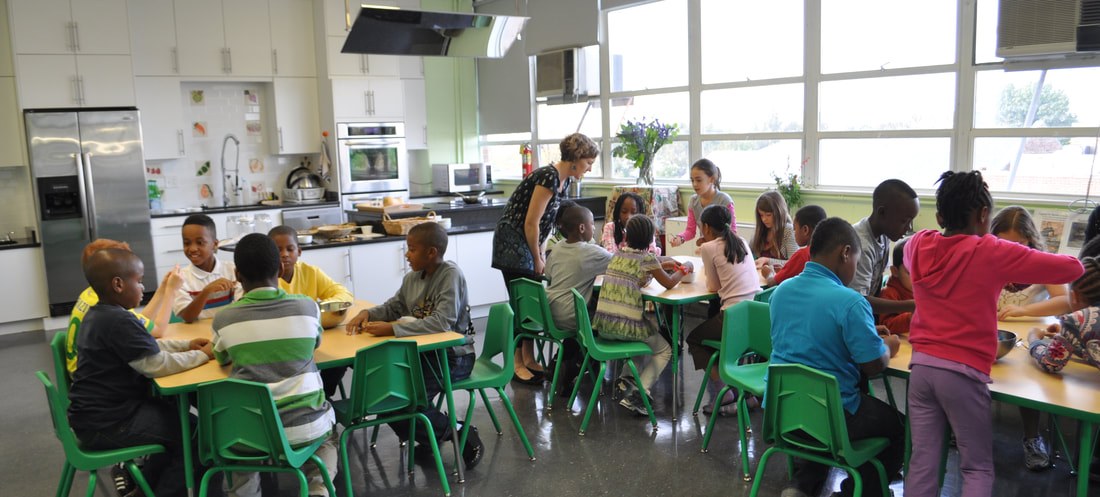
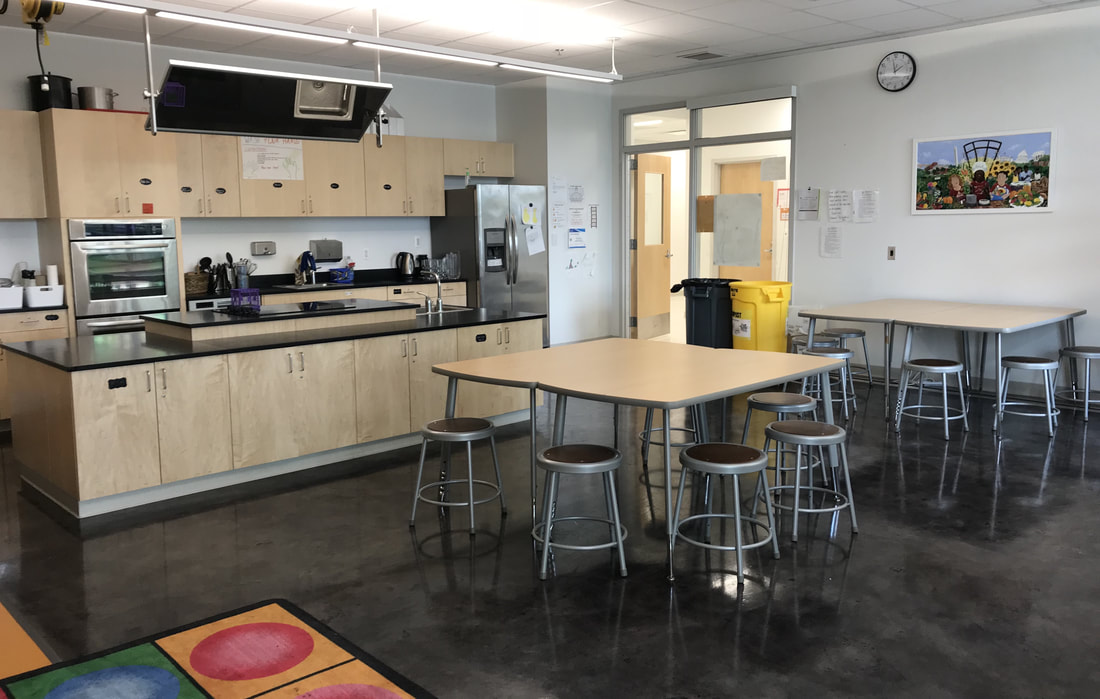
Over the past few years, with the growth of the FoodPrints program, and Watkins’ example, it is becoming increasingly common for schools to request teaching kitchens as part of school modernizations. We’re proud that FoodPrints has set the example and paved the way for more of these kitchens to be built in schools across the city.
In 2016, a teaching kitchen — also supported by Jose Andres — was built into the School Without Walls – Francis Stevens cafeteria renovations such that the classroom is a part of the cafeteria. With this new teaching kitchen, Francis Stevens students have more space and cooking-friendly work areas to learn and cook in FoodPrints classes. And, FoodPrints experiences are more naturally tied to the school cafeteria, where FoodPrints recipes are prepared from scratch as part of the school meals program.
School Within School@Goding also has a teaching kitchen that was part of the school building before SWS moved in. FoodPrints provided funding for minor modifications to make it more useful for programming, including the addition of an island, a demonstration mirror, range, and student-friendly tables and seating.

The Marie Reed community advocated for a teaching kitchen as part of that school’s modernization. After its two-year modernization, Marie Reed re-opened in the fall of 2017 with a new teaching kitchen where FoodPrints provides weekly programming.
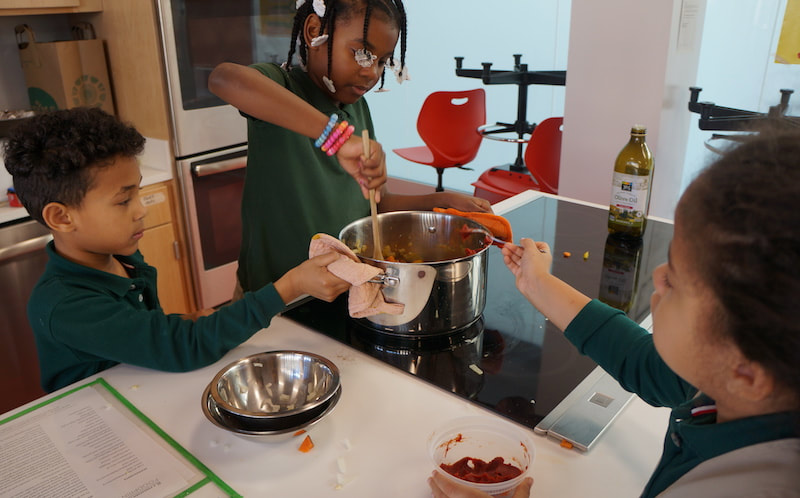
Plans are complete for a teaching kitchen to be built as part of the modernization of Kimball Elementary, one of our current partner schools in Ward 7. Kimball will re-open in fall 2020, when we look forward to continuing FoodPrints programming at Kimball in their a new teaching kitchen.
These kitchens make a tremendous impact in FoodPrints classes, making it easier for students to prepare ingredients, learn cooking techniques, and participate in academic activities. All the new FoodPrints teaching kitchens have been a collaboration between the school communities, FoodPrints staff, DCPS, DGS, the architects, and generous funders and supporters like Jose Andres and Think Food Group. We are grateful to the community of supporters who make these teaching kitchens possible!



